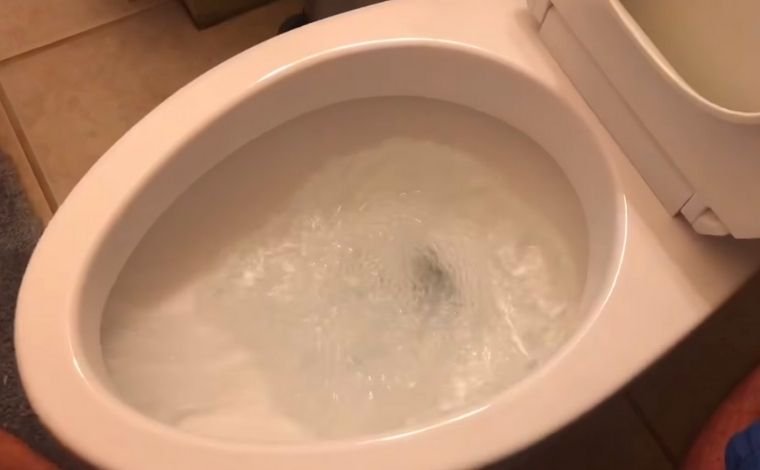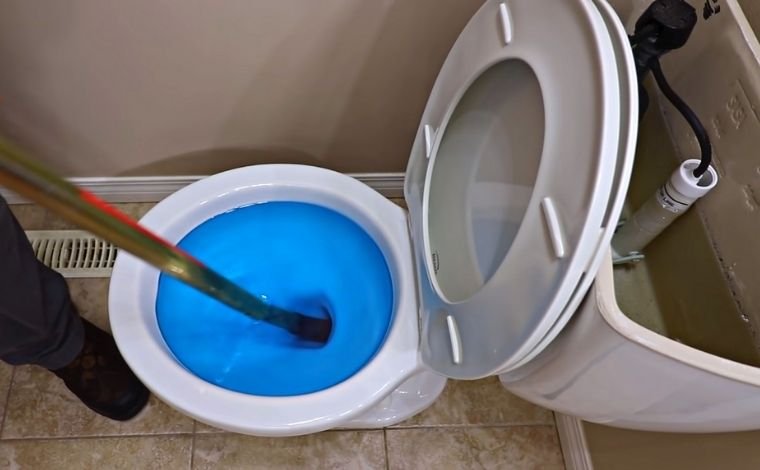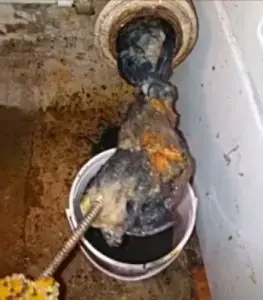If your upstairs toilet keeps clogging, even though you clean and maintain it regularly, you’re not alone. Toilets in upper floors tend to face unique plumbing challenges — from air pressure imbalance to shared drain line issues.
Imagine waking up in the morning only to find your toilet bowl full, refusing to flush, or making gurgling noises. You haven’t flushed anything unusual, yet the water rises dangerously close to the rim. Frustrating, right?
This comprehensive guide explains every possible reason behind a repeatedly clogged upstairs toilet, how to fix it step-by-step, and most importantly, how to prevent it permanently.
Understanding How an Upstairs Toilet Works
Before diving into causes, it’s helpful to understand how the plumbing works in multi-story buildings.
Your upstairs toilet connects to a vertical waste stack — a large pipe that carries wastewater down to the main sewer line. That same stack also connects to a vent pipe that runs upward through the roof, allowing air into the system.
When you flush, water and waste move downward through gravity, while air from the vent keeps the flow smooth by preventing vacuum pressure. If any part of this system — the drain, trap, or vent — is blocked or malfunctioning, the toilet above may clog more often than the one below.
Why Your Upstairs Toilet Keeps Clogging (Explained in Depth)
Let’s explore every possible cause one by one.
1. Blocked or Faulty S-Trap (S-Bend)
Every toilet has an S-shaped trap — that curved pipe under the bowl. Its purpose is to retain water and block sewer gases from entering the bathroom. But this trap is also the first place where debris collects.
Common reasons it clogs:
-
Flushing paper towels or wet wipes
-
Hair strands or soap scum
-
Feminine hygiene products or cotton pads
-
Toys or small hard items dropped by kids
When debris lodges here, it prevents waste from fully exiting. The water still drains slowly, giving you the illusion that it’s working — until one day, the toilet fully blocks.
Detailed Fix:
Start by pouring a bucket of hot (not boiling) water into the bowl to loosen mild clogs. Then use a flanged plunger to create strong suction.
If this doesn’t clear the blockage, a closet auger or plumbing snake can reach deeper inside the trap to break up buildup.
For chronic clogs, the S-trap might have internal buildup or a manufacturing defect — a plumber can remove the toilet and inspect the trapway directly.
2. Low-Pressure or Weak Flushing System
Older low-flush toilets were designed to save water, but many early models (especially from the 1990s) used too little pressure. That means large waste doesn’t get fully pushed into the drain.
Signs your flush is too weak:
-
The bowl doesn’t clear in one flush
-
Water level rises before draining
-
Waste or paper remains floating
-
Gurgling noise after flushing
Technical reason:
Flushing power depends on water volume, siphon jet pressure, and bowl design. If any of these underperform, the waste won’t leave the bowl efficiently and will sit in the trap — eventually causing a clog.
Fix:
Check the tank water level — it should sit about 1 inch below the overflow tube.
Clean the rim holes and siphon jet with vinegar to remove mineral deposits that weaken flow.
If your toilet is over 10 years old, replacing it with a pressure-assisted or dual-flush high-efficiency model is often the smartest move.
3. Hard Water and Mineral Buildup
Hard water is full of calcium, lime, and magnesium. Over time, these minerals form white crusty deposits (limescale) around the rim holes and inside pipes.
These deposits shrink the diameter of the pipes, reducing water speed and making waste more likely to stick.
Effects of hard water on toilets:
-
Reduced flushing efficiency
-
Persistent stains on bowl surface
-
Rough texture inside the trap (waste sticks easily)
Fix:
Once a month, pour white vinegar into the tank and bowl and let it sit for a few hours before scrubbing.
For heavy limescale, use a commercial descaler or call a plumber to hydro-descale the pipes.
To prevent future buildup, install a whole-house water softener or filter.
💧 Extra tip: Vinegar is eco-friendly, kills bacteria, and helps remove odors naturally.
4. Low Water Level in the Tank
A flush needs enough water pressure to generate a powerful siphon. When the tank water level is too low, it doesn’t push waste far enough down the drain.
Possible reasons:
-
Misadjusted float ball
-
Faulty fill valve
-
Leaking flapper
-
Damaged refill tube
Fix in detail:
Open your toilet tank and check the water level line marked inside. Adjust the float arm screw or the fill valve height until it’s at the proper level.
If the water slowly drains back into the bowl after filling, the flapper isn’t sealing properly — replace it immediately.
5. Blocked Drain Line
Sometimes the issue lies deeper than your toilet. The drain line connecting your toilet to the main sewer pipe can get blocked with grease, wipes, or sediment.
In older buildings, pipes may even have tree root infiltration or collapsed sections, reducing flow for every toilet connected to that line — especially those upstairs.
Symptoms:
-
Gurgling sounds from the bathtub or sink when flushing
-
Multiple fixtures draining slowly
-
Foul smell from floor drains
Fix:
For minor clogs, try a drain snake or enzyme-based cleaner.
If you suspect a mainline clog (multiple drains affected), you’ll need a professional hydro-jetting service or camera inspection. This ensures the blockage is fully cleared without damaging the pipes.
6. Clogged or Blocked Vent Pipe
The vent stack is one of the most overlooked parts of plumbing systems. It extends through your roof and allows air to balance pressure inside the drain system.
When it’s blocked by bird nests, leaves, dead insects, or snow, air cannot enter, creating a vacuum that stops water from flowing freely. The result? Slow drains and repeated clogs — especially on upper floors.
Fix:
Go to your roof and inspect the vent opening. Use a flashlight and garden hose to flush debris.
If you hear gurgling in nearby drains while doing this, the vent was definitely clogged.
For safety, hire a plumber if the roof is steep or the vent stack is tall.
7. Flushing Non-Flushable Items
This one’s simple but common. Toilets are designed to handle human waste and toilet paper only. Anything else risks blockage.
Items you should NEVER flush:
-
Paper towels or wet wipes
-
Feminine products
-
Q-tips or cotton pads
-
Cat litter or pet waste
-
Food scraps or oil
-
Small plastic items
Even if packaging says “flushable,” most wipes don’t disintegrate fast enough, leading to buildup in the S-trap or drain line.
Fix:
Keep a small covered trash bin near the toilet.
Educate kids and guests not to treat the toilet like a garbage disposal.
8. Shared Plumbing Lines in Apartment Buildings
In multi-story apartments or duplexes, toilets and sinks often share a single vertical drain stack.
If one apartment on a lower floor clogs the main drain, that blockage can back up into your upstairs toilet.
Fix:
Check whether other units are facing similar issues. If yes, inform your landlord or building maintenance. They’ll likely need to snake or jet the main sewer line.
Avoid using the toilet until the issue is professionally resolved to prevent overflow damage.
9. Aging or Poorly Designed Toilet Model
Some older toilets have narrow trapways and outdated siphon mechanisms. Even if your drain and vent are perfect, these toilets simply don’t flush efficiently.
Fix:
Replace old models with modern high-efficiency designs like:
-
Toto Drake II
-
Kohler Highline Classic
-
American Standard Champion 4
They provide stronger flush performance and reduce water use while preventing frequent clogs.
10. Sewer Line Problems
If all toilets in your house start clogging or draining slowly, the culprit might be the main sewer line connecting your home to the city system.
Grease, tree roots, or pipe corrosion can narrow or block the line, making your upstairs toilet the first to show trouble due to gravity flow.
Fix:
Call a professional for a video inspection. Hydro-jetting or pipe relining may be required.
Never ignore this — untreated sewer backups can cause contamination and floor damage.
Step-by-Step: How to Fix a Clogged Upstairs Toilet
If your toilet is already clogged, follow these detailed steps before calling a plumber.
Step 1: Prevent Overflow
Quickly lift the tank lid and close the flapper to stop water entering the bowl. Place towels around the base in case of overflow.
Step 2: Use a Plunger Correctly
Fill the bowl enough to submerge the rubber end. Push down slowly, then pull sharply up to create suction. Repeat several times.
If the water suddenly drains, flush once to test.
Step 3: Try a Toilet Auger
Insert the auger into the drain opening and crank the handle gently until you feel resistance. Rotate and push slowly to break through. Pull out the auger and clean it after use.
Step 4: Use a Vinegar–Baking Soda Flush
Pour one cup of baking soda followed by two cups of vinegar into the bowl. After the fizzing stops, pour hot water and let it sit for 10–15 minutes. Flush again.
Step 5: Inspect the Roof Vent
If the toilet keeps clogging, check the roof vent. A blocked vent prevents proper pressure. Flush water through it using a hose.
Step 6: Adjust Water Level in Tank
Ensure the fill level line is correct. If it’s too low, adjust the float. If it leaks, replace the fill valve or flapper.
Step 7: Replace Old Parts
Old flappers, valves, or handles can cause incomplete flush cycles. Replacing them improves water pressure and reduces future clogs.
Step 8: Seek Professional Help
If the toilet keeps clogging despite cleaning, call a licensed plumber. There may be hidden issues inside the main stack or sewer line.
Prevention Tips: Keep Your Upstairs Toilet Clog-Free
-
Flush wisely: Only human waste and toilet paper.
-
Avoid overloading: Flush twice if needed after large use.
-
Install drain screens: Prevent hair and debris from entering drains.
-
Clean regularly: Use vinegar or mild cleaner weekly.
-
Check water level: A strong flush clears waste effectively.
-
Inspect vent pipes annually.
-
Avoid harsh chemicals: They erode pipes over time.
-
Teach children toilet manners: Prevent toy or tissue blockages.
-
Upgrade your toilet: Modern models resist clogs.
-
Schedule plumbing inspections: Once a year prevents big repairs later.
Real-World Example
A family living on the third floor of an old apartment complex faced constant toilet blockages every few weeks. After multiple DIY attempts, they discovered the main vent pipe on the roof was partially blocked with a bird’s nest.
Once cleared, the problem disappeared permanently. This case shows that sometimes the real cause isn’t inside your bathroom at all.
Frequently Asked Questions (FAQ)
Q1. Why does my toilet keep clogging even after plunging?
Because the blockage may be deeper in the drain line or vent system. Try using a toilet auger or call a plumber for inspection.
Q2. Can too little water cause clogging?
Absolutely. Low water levels mean less flushing pressure, making waste stick inside the trap.
Q3. My upstairs toilet clogs when I flush downstairs — why?
That’s a sign of a shared or partially blocked main line. Pressure differences cause one fixture to affect another.
Q4. Can a vent blockage cause bad smells?
Yes. A blocked vent stops sewer gases from escaping, leading to foul odors in bathrooms.
Q5. Should I use drain cleaner liquids?
No. They often damage porcelain, rubber gaskets, and old PVC pipes.
Q6. How often should I clean my toilet’s tank and rim holes?
At least once every two months. Use vinegar or mild acid cleaner to dissolve minerals.
When to Call a Plumber
-
Repeated clogs despite cleaning
-
Water backing up into other fixtures
-
Gurgling noises from nearby drains
-
Slow draining even after plunging
-
Sewer smell inside the bathroom
Professional plumbers use camera inspection tools to locate hidden blockages and can clean the full line with hydro-jet equipment, ensuring permanent relief.
Final Thoughts
A clogged upstairs toilet can be frustrating, but once you understand how your plumbing system works, the mystery becomes manageable.
Most issues come from blocked traps, vent obstructions, or weak flush systems — all of which are fixable with regular maintenance.
Remember: toilets don’t clog themselves overnight. It’s usually a gradual buildup that you can prevent by being mindful of what goes down the drain.
Keep your plumbing healthy by:
-
Flushing properly
-
Cleaning regularly
-
Checking vents and drains annually
If you still face problems, don’t hesitate to call a professional. Timely inspection can save you from major repair costs and water damage later.
Hi, this is Robert Crossan, the owner of this website, has 17 years of experience in the installation, maintenance, and repair of toilets and plumbing systems. After completing the Level 2 Basic Plumbing course in 2005, I started working in both domestic and commercial buildings as a professional plumber. So I can figure out the core difference between different toilet models and brands. It also helped me monitor their work performance and setbacks.
